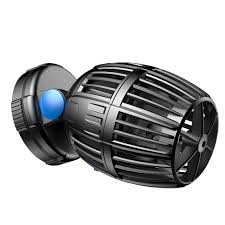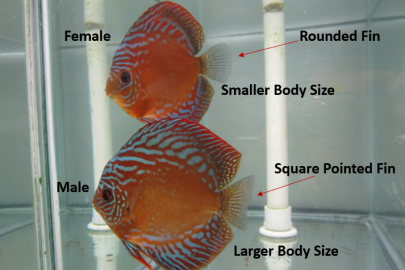Aquarium Circulation Pumps
Circulation pumps are responsible for circulation of water in the aquarium. Without circulation of water in the aquarium there would be disastrous effects such as lack of sufficient oxygen for the fish or even plants in the aquarium. Most aquariums can actually survive without other requirements such as light, but none can survive without water movement, that is water circulation. Creating water movement in the aquarium is one of the simplest tasks you can do, yet it’s also one of the most critical. When water is circulated it brings about several benefits. First, it brings oxygen and new algae and washes away any waste in the aquarium tank. More so, when an aquarium circulation pump is installed, it reduces the need for frequent cleanings by moving the water around and providing the necessary catalyst for most filters to function.
Types of Aquarium Circulation Pumps
Different kinds of aquariums require different types of pumps. There are generally two main types of aquarium circulation pumps, including:
• Air pumps
• Water pumps
i) Air pumps
Air pumps work to push air into the water of the aquarium and are often found outside the tank. Air pumps are great for adding pressurized air to the tank to keep filters working.
ii) Water pumps
Water pumps are classified into two main types namely submersible water pump and in-line water pump. Each of the two has its own advantages and the filter used for personal preference often determines whether to opt for a submersible or inline water pump.
A submersible water pump operates entirely underwater by drawing water from the filter and sending it back through the aquarium, often in conjunction with one or more types of aquarium filtration systems. Easy to install, water pumps are considered the quietest style of pump.
In-line water pumps on the other hand are connected to an inlet hose used to filter aquarium water, typically located externally. These pumps are extremely powerful and are capable of moving many more gallons per hour than the average submersible pump.
Both pumps, that is air pumps and water pumps, aerate stagnant water, which creates currents and as a result causes water to move through accessories within the aquarium tank such as sumps, filters and skimmers. It is good to note however that each of the accessories will serve the different needs of any given tank.
Choosing Aquarium Circulation Pumps
i) Capacity
It would be critical that the aquarium circulation pump needs to have the capacity to manage any peripherals of the aquarium tank that may require it for proper functioning. The pump must also be the right kind for the type of water managed in the aquarium.
ii) Other peripherals
If you are running a filter, skimmer or something similar in conjunction with a pump, you will need to consider a pump capable of processing a compatible volume of water, at a given speed. This speed depends on the demands of the additional devices. Most filtration devices require a turnover of around 6 gallons of water per hour and it is best to have a pump that is capable of moving water at that speed. For example, a pump for a 30 gallon tank should be graded to move at least 180 gallons per hour.
iii) Material
Saltwater aquariums are highly corrosive and all pump parts used in these aquariums must be made with anti-corrosive material. However, a pump graded for saltwater can be used effectively in freshwater.
Conclusion
An aquarium pump is an aeration device to keep water circulating in tanks. The aquarium circulation pump creates a happy and healthy environment for fish by mimicking the currents and waves of a natural habitat as closely as possible. A circulation pump also keeps the environment clean and productive for fish.







7 Comments
Donald Baskin
Hello and Thanks for all the valuable info. You had mentioned before about the benefits of bio rings, carbon etc. How often do you change out the bio rings. Thanks
discusguy
Hi Donald,
Thanks for the message. You never want to change out the bio rings. The bio rings hold all of your beneficial bacteria that kills all the waste in the fish tank. The carbon can be changed every 6 months. Same with the filter pads or cotton. Any type of bio media you don’t clean nor change.
Thanks
Rob
Free Stuff
wonderful post, very informative. I wonder why the other experts of this sector do not notice this. You should continue your writing. I am confident, you’ve a huge readers’ base already!
Hairstyles
Hello there, just became aware of your blog through Google, and found that it is really informative. I will appreciate if you continue this in future. Lots of people will be benefited from your writing. Cheers!
Hairstyles
Fantastic web site. A lot of useful information here. I am sending it to a few friends ans also sharing in delicious. And obviously, thanks for your sweat!
Hairstyles
Hello! I’ve been reading your website for a while now and finally got the bravery to go ahead and give you a shout out from Porter Texas! Just wanted to say keep up the excellent work!
sky-aims
Thanks for the comment. I’m glad you like the website. I hope that you find it beneficial.
Rob